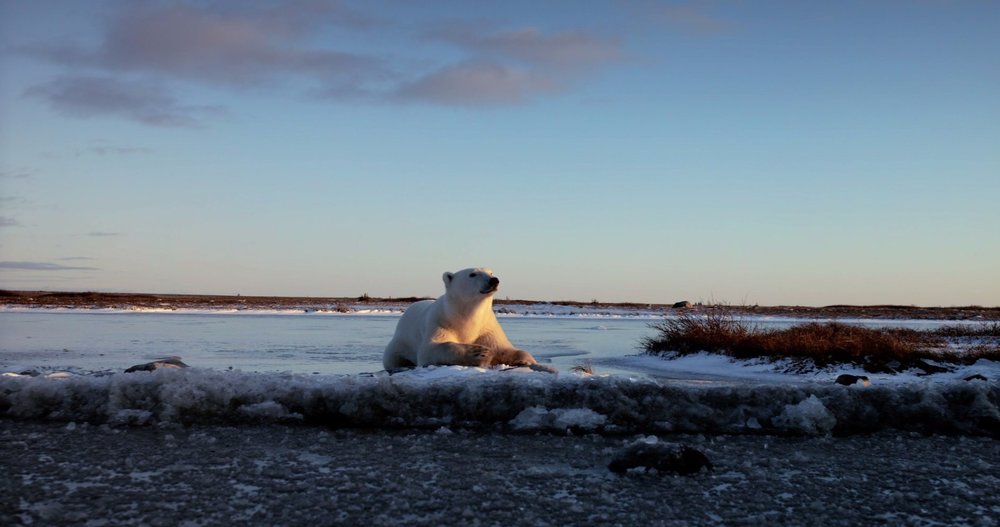
Tundra Conundrum
The arctic spans more than five millions square miles, and after watching Wonders of the Arctic, I felt I'd walked, swam, and hiked them all. Writer/director David Lickley has several movies' worth of stories to tell about life at the top of the world, but this 2014 IMAX documentary only teases them as he and his crew trek between identical landscapes with nigh-indistinguishable horizons.
I don't blame Lickley for his movie's lack of narrative thrust: by definition, there's not a whole lot of human activity in the coldest place on Earth. At fault are my own unreasonably high expectations after having enjoyed nearly a half-dozen such movies whose creators found a compelling hook in their subjects, a through-line that made the beautiful higher-than-high-definition imagery and sound almost secondary to the overall theme. Wonders of the Arctic plays as a forty-minute trailer compilation of movies I'm dying to see.
The film's greatest surprise is that the titular wonders aren't all related to arctic birds, polar bears, or sea creatures. There are some great human stories here as well, such as the American and British scientists working with the indigenous Inuits to measure ice thickness. We also get a glimpse at a nickel-mining operation in Quebec, where crews drill patiently into 1,9000-foot-thick blocks of ice. Nearby, a massive "icebreaker" ship makes its way through the thirty feet of ice separating surface from water, traversing a mere 400 feet in 5 days.
Then there's the remote Hudson Bay town of Churchill, where the one guideline for Halloween costumes is "No Polar Bears!". With global temperatures heating up, the polar bears' food supply is increasingly off schedule. Lickley catches up with a trio who haven't eaten in four months, and venture down to Churchill in desperation. The local sheriff has been working overtime keeping the creatures at bay, and I was fascinated by the humane process in which the polar bears are tranquilized, air lifted back to the wild, and revived (before the attendants scramble to get the hell back on the helicopter, of course).
Wonders of the Arctic is, like its recent IMAX home video companions, a movie about conservation. I got the feeling watching this that Lickley's film might one day be remembered as a gorgeous historical artifact instead of a postcard for a place that everyone could feasibly visit. As I mentioned in my review of The Last Reef, I'm not a scientist and have not done my homework on climate change. But as films like Lickley's track and model-out changes to eating and migration patterns, and describe the increasing amount of water at the top of the planet that doesn't freeze during winter months, it's hard to dismiss the threat (or at least the not-at-all-fanciful possibility) that our planet is in trouble.
To clarify: the planet will be just fine, long after we're gone. Just look at the shrimp and the ancient sharks that live in the sun-deprived depths of the arctic for proof that nature doesn't care about people or the documentaries we make about them. Nature will find a way to outlive us. Wonders of the Arctic makes some compelling visual arguments for our stepping up efforts to conserve our own species--and that means keeping the planet from reclaiming us.
But in between the tranquil, alien footage of frolicking narwhals, and a rookie whale scientist trying to tag a bowhead for study, there were just too many minutes-long landscape shots and spinning aerial views of ice caps to keep my attention's fires burning throughout. I found myself easily distracted as nature receded into the periphery. Hell, maybe that was Lickley's point.

